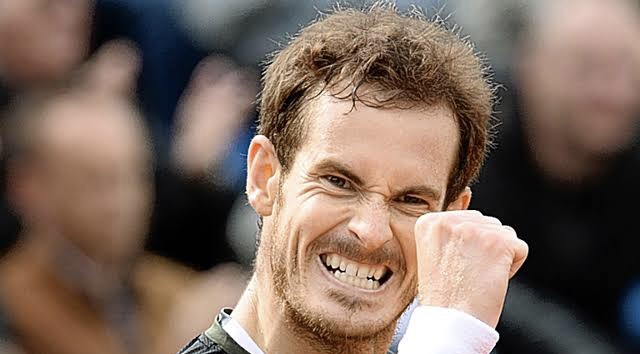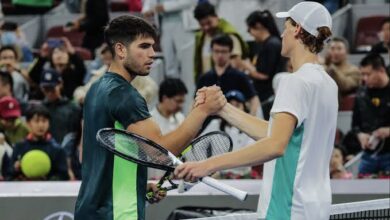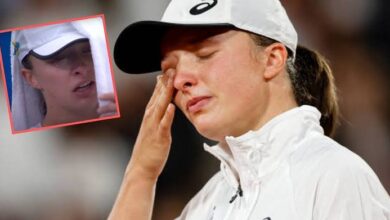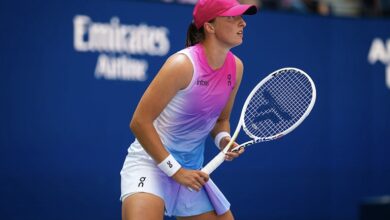Andy Murray: A Legacy Of Perseverance & Resilience

It’s time to say goodbye to a champion of great intelligence and integrity. A player who persevered, to make steady progress to the very top, and who used his global standing to empower and pursue good causes, notably gender equality and women’s sport.
The truth is that Andy Murray has been forced to retire. His mind is as sharp as ever, but the body is broken. His love of the sport; of competing, is perennial. Yet today, in Paris, one of Great Britain’s greatest sportsmen closed the curtains on a historic career.
The record books indicate that the Scot captured three Grand Slam titles: 2013 and 2016 Wimbledon, and the 2012 US Open; two Olympic singles gold medals; the 2015 Davis Cup; 46 tour-level trophies overall; spent 41 consecutive weeks at No. 1 in the PIF ATP Rankings and recorded 29 victories against the Big Three. Murray was knighted, too, in 2019, becoming only the second tennis player after Sir Norman Brookes to receive the honour.
Yet the joy of following Murray, watching his performances, was so much more. Here was a very human champion, who, across three resilient chapters, squared off against Roger Federer, Rafael Nadal and Novak Djokovic, during a golden 20-year era for professional tennis.
The pathway to greatness is individual. Living only 300 metres from a tennis club, the sport became an escape for the Murrays and a sibling rivalry was born as mother, Judy, began to develop what would become a nationally recognised programme.
Jamie moved to Cambridge, 370 miles south of Dunblane, to develop his own game, but returned after eight months. Andy continued to hone his skills as a counterpuncher and, under the guidance of Leon Smith from the age of 11, learnt how to deal with anxiety and breathing problems when competing.
By 2003, just two years before Murray turned pro, Judy, a former Scottish champion, took out a £30,000 bank loan to send her 15-year-old son to Barcelona. It was a period of huge financial stress. The goal was to rank in the Top 100, and Murray decided that only a double-digit ranking would quantify as a success.
Softly spoken, almost shy and reticent initially, Murray’s easy-going demeanour off the court was always at odds with his on-court persona in high-stakes matches. When he needed to balance a tension and his own desire for victory, his dedication was never in question. The family certainly took British Tennis with them right from the very start, following Andy’s 2004 junior success at the US Open (d. Stakhovsky to win the boys’ singles title), learning lessons every step of the way.
Murray initially ruffled feathers. He challenged the British tennis establishment. He wore his heart on his sleeve; he shouted (to his team or berating his own performance) and fist pumped a lot. He was tenacious as well as courageous. He competed for everything. He didn’t like to lose.
Bobby Wilson, Mike Sangster, Mark Cox, Roger Taylor, Jeremy Bates, Tim Henman and Greg Rusedski had all tried to follow in the footsteps of Fred Perry, the benchmark. But Murray was different. There was great coordination, courtcraft and tactical nous, but he showcased a resilience that no coach could teach. A sprinkle of magic dust.
Murray’s mentality surfaced in playing sport with his brother, Jamie, and a group of enthusiastic children, on rainy days in Dunblane; travelling for hours on end into England to compete at tennis tournaments. With his older brother, who has clinched seven major doubles titles and would rise to No. 1 in the PIF ATP Doubles Rankings in 2016, they rocked the status quo, educating British tennis fans and carrying the traditionalists into the 21st century.
The emotional struggle was always close to the surface. As Murray established himself, the relentless pursuit of improvement was continual; always asking questions of himself and others; and, with every practice session or match, he was proving to be a fast learner.
He was the youngest Briton to represent Great Britain in Davis Cup in 2004; two years later, Murray recorded his first Top 10 win and lifted his first ATP Tour title at San Jose (d. Hewitt), and in 2007, he took Nadal to five sets in the Australian Open fourth round. Murray broke into the Top 10 for the first time that season on 16 April.
Murray never pandered to his critics, who wanted him to play more aggressively. He became tactically stronger, realising that he could slice up his rivals in so many different ways. In 2008, he won his first ATP Masters 1000 title at Cincinnati and reached his first major final at the 2008 US Open (l. to Federer).
Yet a Grand Slam trophy remained elusive. Who can forget when Murray admitted, “I can cry like Roger, it’s just a shame I can’t play like him,” after the 2010 Australian Open final? Or the watershed moment for the wider British public, when Murray broke down after the 2012 Wimbledon final, exclaiming, “I’m going to try this. And it isn’t going to be easy…”
By then Ivan Lendl was in his corner. Murray had never been fearful of switching coaches — from Pato Alvarez, Mark Petchey, Brad Gilbert, Miles Maclagan and Alex Corretja — in his quest for perfection. But with Lendl, secured with the help of Darren Cahill, the Scot found someone who understood him, someone who had lost his first four Grand Slam finals; a person he could speak honestly with and alter how he approached big matches.



